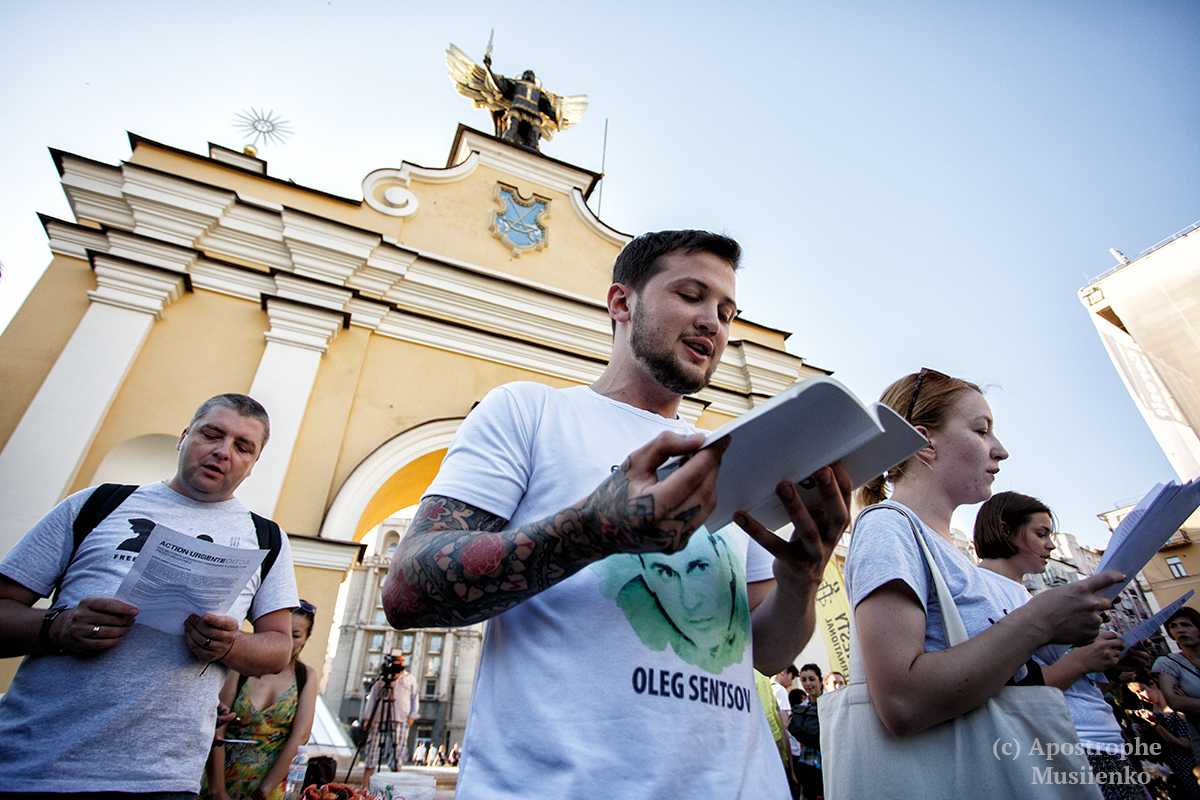Afanasiev: enduring hell in Russian prisons
Although he tries to lighten the mood with jokes, Hennadiy Afanasiev’s voice still trembles when he talks about the more than two years he spent in Russian jails as a political prisoner.
One of the more noteworthy figures among the 28 Ukrainian political prisoners held in Russia, Afanasiev was charged with terrorism. He signed a confession under torture, but then recanted publicly at a trial, all to no avail.
He returned to Ukraine after a prisoner exchange with Russia on June 14. He is one of only three Ukrainian political prisoners released so far.
Torture for testimony
The Russian security service agents arrested Afanasiev, then a 23-year-old photographer and pro-Ukrainian activist, on the street of his native Simferopol in Crimea.
On May 9, 2014, two months after Russia invaded Crimea, Afanasiev was returning from a pro-Ukrainian rally, one of the last ones that took place. The date, a World War II Victory Day, has a special meaning in Russia, where the authorities use it to remind of the country’s military power.
As he headed to meet a friend, several agents approached, put a bag over his head and threw him into a car. First, they took him to his own apartment and searched it. Then, he was put in a security service compound in Simferopol.
That’s when the hell started.
Afanasiev was accused of preparing terrorist attacks with movie director Oleg Sentsov, activists Oleksandr Kolchenko and Oleksiy Cherniy, who were arrested two days after Afanasiev. They were accused of preparing to blow up two Soviet monuments in Crimea.
To get him to sign a confession and testify against his alleged conspirators, the agents tortured Afanasiev for 10 days.
Beatings on the head and stomach were easier to take than what came later. When that didn’t work, they put a plastic bag over Afanasiev’s head. Then came a gas mask with a closed hose that meant he struggled to breathe. The hose would finally be opened, but only for the jailers to pour in some liquid that made the prisoner choke and vomit – while the gas mask was still covering his face. For the culmination, they would send an electrical current through his genitals. The jailers also woke him up constantly during the night.
What helped to crack him in the end, however, were the threats to his mother.
“’We will bring your mother to the next room, and you will hear us doing the same to her’,” Afanasiev’s lawyer Alexander Popkov quoted the agents as saying. After 10 days of torture, Afanasiev signed a pre-written testimony saying that he was preparing a terrorist attack with Sentsov and Kolchenko.
A Moscow court used this testimony to convict the two in 2015. “Under that torture, I could sign anything against anyone, to be honest,” Afanasiev says today.
Afanasiev claims that the agents who tortured him were former officers from the Ukrainian Security Services who were hired by Russia’s security service, the FSB, after the occupation of Crimea.
Fighting back
After initial questioning in Simferopol, Afanasiev and other arrested Crimeans were sent to Moscow for trial.
Afanasiev’s trial was the fastest. Since he already had pled guilty, in December 2014 he was sentenced to seven years in prison for plotting a terrorist attack.
Afanasiev made it back into the spotlight in July 2015, when Russian prosecutors called him as a witness to the trial of Sentsov and Kolchenko.
There, Afanasiev surprised everyone: He withdrew his testimony. Standing in the Moscow court he announced that he signed the testimony against Sentsov and Kolchenko under torture. The two met this confession with applause.
In the end, however, Sentsov and Kolchenko were still found guilty of terrorism and sentenced to 20 years in prison. The Ukrainian authorities are negotiating for their release.

Hennadiy Afanasiev (R) greets another hostage Oleg Sentsov on his birthday.
But for Afanasiev, this rebellion lifted his spirit.
He stopped being afraid of tortures and began to resist the prison’s administration. He wrote up to 12 complaints and appeals every week, complaining about severe conditions.
Afanasiev was released on June 14. The Russian authorities exchanged him and Yuri Soloshenko for two prisoners held in Ukraine, Ukrainian citizens Olena Hlishchynska and Vitaliy Didenko, charged with promoting separatism in April 2014 in Odesa.
Afanasiev, Soloshenko and Ukrainian pilot Nadia Savchenko are the only Ukrainian political prisoners released so far from Russia’s prisons.
“I am the only person who was convicted of terrorism in Russia and then released,” says Afanasiev.
Prison’s toll
For the first year and five months of his time in the Russian prison, Afanasiev wasn’t allowed to meet his family or a representative of Ukrainian authorities.
“I was in a vacuum,” he recalls. “No one was there, not a consul or a lawyer. They didn’t even give me letters.”
He also got no medical care.
“They take a pill of aspirin, break it in half and say: ‘This one’s for your headache, this one’s for diarrhea – do not mix them.’ That was all the treatment,” he says.
So when he got serious ulcers on one hand and needed to stop the infection from spreading, he had to improvise.
“I sharpened a piece of iron and had to cut off pieces of my skin… I couldn’t get rid of inflammation. To cut it off hurt less,” he says.
He ended up catching a blood infection that became a formal reason for his release. He’s been treating it even now.
For the last three months before the release Afanasiev was put in solitary confinement.
“I could only talk to myself and the cockroaches,” he says.
He recalls how the prison was gradually changing his personality.
“In the first year you dream about freedom, you remember it,” he says. “After two years, the degradation starts and you are just surviving, like a wolf.”
After the release, Afanasiev has returned to Crimea-related activism – although he can’t return to Crimea, he has been working on making a map of all the violations of human rights in Crimea after the Russian occupation.
Source: http://www.kyivpost.com

